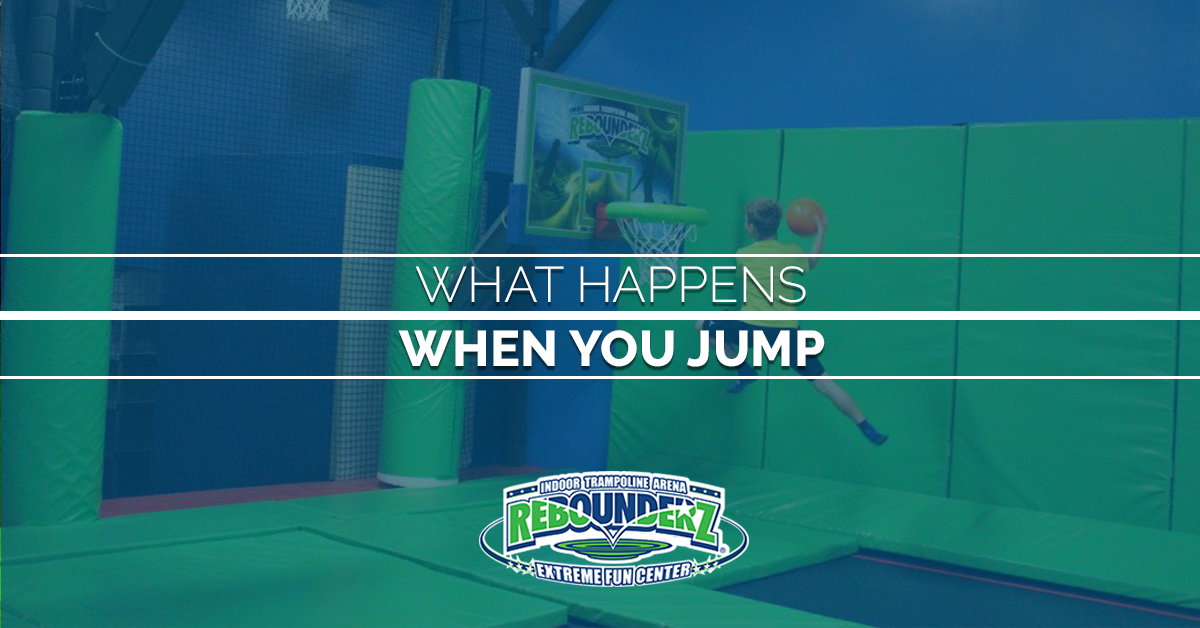ENJOY FREE ADMISSION EVERY DAY WHEN YOU PURCHASE A REBOUNDERZ MEMBERSHIP!

Call Us Now: (833) 832-1255
ENJOY FREE ADMISSION EVERY DAY WHEN YOU PURCHASE A REBOUNDERZ MEMBERSHIP!

Call Us Now: (833) 832-1255

Most of us begin life just trying to support the weight of our own heads. With a lot of work, we progress to crawling, then walking, then running. Jumping usually comes along at some point, and it not only helps us get over puddles, it can be tons of fun. However, though jumping is awesome and plenty of people do it all the time, most of us don’t understand just what our body has to do to propel itself up off the ground. Keep in mind that when you jump, you disobey gravity, pushing yourself away from the planet creating the force that keeps you from floating into space. A jump may seem like nothing to you, but it’s a lot to your body. In today’s blog, we’re going to explore just what has to happen in your body in order to get you up in the air!
This action is the same action that happens when you stand up from sitting in a seat. It occurs at the beginning of your jump, before your feet even leave the ground! Nobody keeps their legs completely straight and jumps straight up. You have to fold yourself a little at the knees and hips first. As you straighten into a jump, you are going through hip extension. The muscles involved here are all in your upper legs and gluteal area and include the gluteus maximus, semimembranosus, semitendinosus, adductor magnus, and the long head of the biceps femoris.
We all bend our knees in preparation to jump, and once we’re ready to take off, we have to straighten our legs at the knees. This straightening motion is called knee extension. It happens almost at the same time as hip extension. However, there is only one muscle involved in knee extension: the quadriceps femoris, casually known as your “quads.” This huge muscle is made up of smaller separate muscles called the rectus femoris, vastus intermedius, vastus medialis, and vastus lateralis. These muscles work together not just to straighten your knee, but to help you push off teh ground.
Ankle plantarflexion is a fancy way of saying “pointing your toes.” Your toes are the last part of your body to leave the planet surface, and your lower leg makes sure they contribute to your flight. The gastrocnemius and soleus muscles are the big muscles on your calves, and they help the foot really push off the ground, giving you that last little bit of lift.
Most of us use our arms to help with jumps. Wrenching your arms up can give you a few more inches of flight, and that means the muscles in your shoulders usually clench tight and help you swing your arms, two motions called flexion and abduction.
If you don’t understand why jumping is fun, you haven’t ever visited Rebounderz. We give your hard-working muscles a little help with our fantastic array of trampolines, allowing you to catch more air than ever before. Perfect for anything from team builders to kid’s birthday parties, Sterling’s Rebounderz is here to serve! Contact us today!